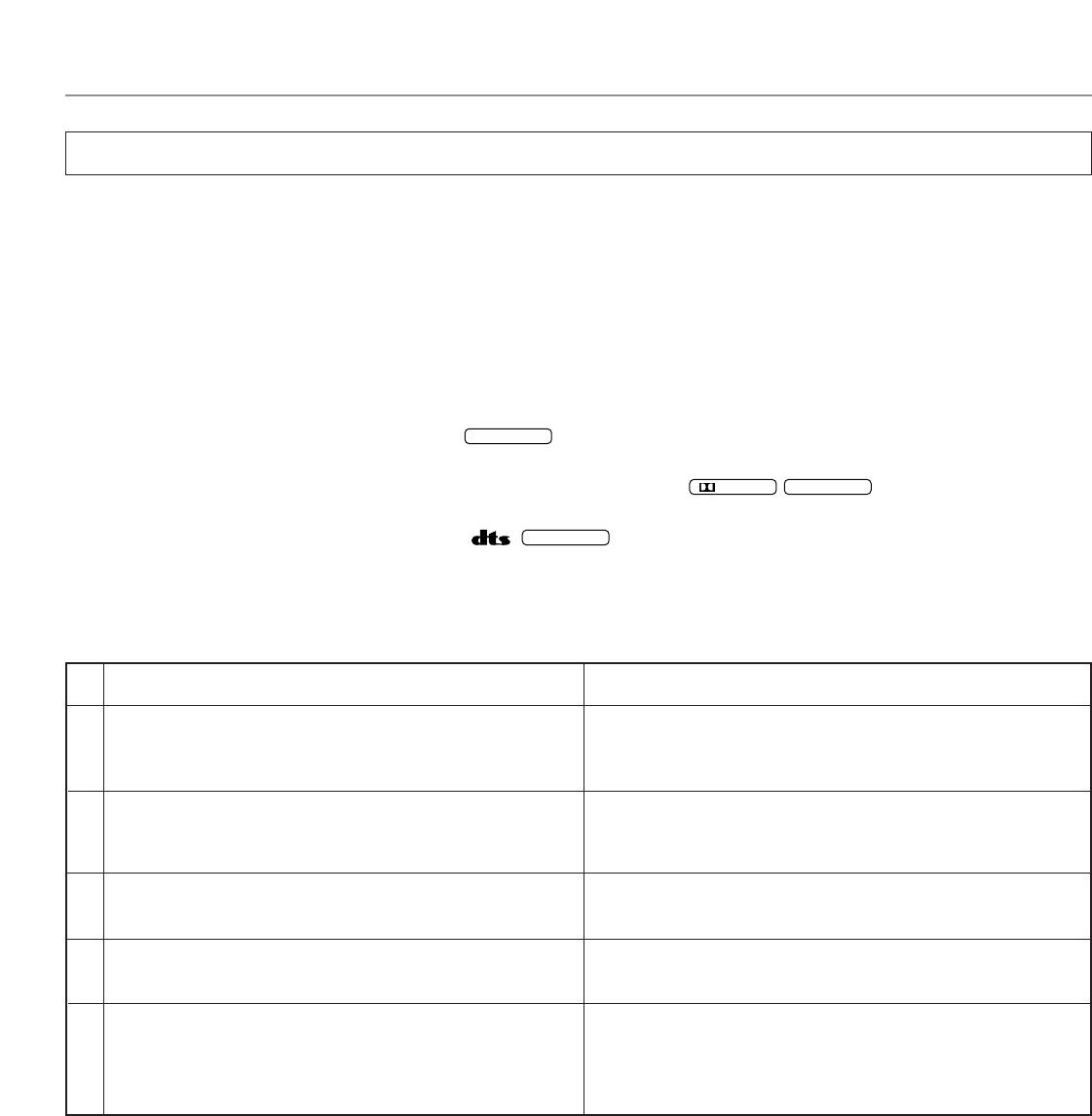
52
The following list gives you a brief description of the sound fields produced by each of the DSP programs. Keep in mind that most of
these are precise digital recreations of actual acoustic environments. The data for these sound fields were recorded at actual
locations using sophisticated sound field measurement equipment.
Note
The channel level balance between the left and right rear effect speakers may vary depending on the sound field you are
listening in. This is due to the fact that most of these sound field recreations are actual acoustic environments.
Ⅵ Program No. 1 to 5: Hi-Fi DSP programs (for audio sources)
●
When the input signal is analog or PCM audio: ( )
Speaker output: main, rear
●
When the input signal is encoded with the Dolby Digital (not in 2 channels): ( )
Speaker output: main, center, rear
●
When the input signal is encoded with the DTS: ( )
Speaker output: main, center, rear
DSP
DSP
DIGITAL
DSP
Brief overview of digital sound field programs
BASIC OPERATION
FEATURE
In this program, the center will appear to be deep behind the
main speakers, creating an expansive large hall ambience.
Orchestra and opera music are suited for this sound field.
This program recreates the acoustic environment of a big
church with a high pointed dome and columns along the sides.
This interior produces very long reverberations.
This is a small, cozy jazz club with a low ceiling. The sound is
very close and intimate.
This program is ideally suited for rock music. You will
experience a very dynamic or lively sound field.
This program recreates the acoustic environment of a lively
disco in the heart of a very lively city. The sound is dense and
highly concentrated. It is also characterized by a high-energy,
“immediate” sound.
PROGRAM
CONCERT HALL
CHURCH
JAZZ CLUB
ROCK CONCERT
DISCO
No.
1
2
3
4
5


















